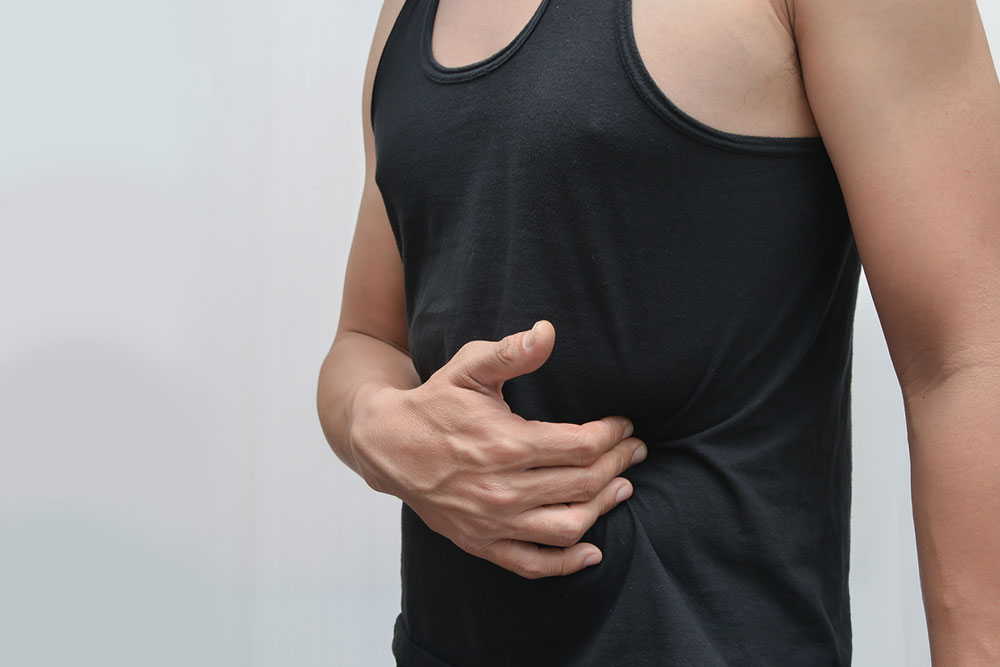Causes and Symptoms of Gallbladder Disease
Gallbladder disease is caused by the accumulation of gallstones. Gallstones are structures formed by a combination of cholesterol, calcium, and bile salts. These structures are not stones but pieces of solid matter that form in the gallbladder, which is a small organ located under the liver in the upper right region of the abdomen. This pear-shaped organ stores bile produced by the liver to digest fat. It helps the body absorb fat-soluble vitamins and nutrients. In a healthy gallbladder, this process happens naturally without any discomfort or pain. However, when the gallbladder stops functioning well or if the bile ducts get clogged, it can cause a lot of pain and discomfort.

Gallstones can develop in varying sizes ranging from as small as a grain of sand to as big as a golf ball. The pain may last from a few minutes to a couple of hours. Some people may develop a single gallstone, while others may get several gallstones at the same time.
Statistics reveal that this disease has a high incidence in people who have weight problems, high blood cholesterol levels, and suffer from gastrointestinal disorders.
Causes of gallstones
According to observation, problems in the gallbladder arise because of improper diet and obesity. Gallbladder disease generally affects overweight people. The consumption of foods which are rich in fat also contributes to the development of gallstones.
Experiments reveal that the painful symptoms of gallbladder disease can get triggered due to allergic reactions to foods such as eggs, meats, dairy products, and citrus fruits. The consumption of chocolate, coffee, and carbonated soda can also trigger this condition.
A few common reasons for the occurrence of gallbladder disease are:
- Genetic factors
- Excess weight
- Inappropriate diet
- Presence of excess cholesterol in bile
- If the gallbladder cannot empty properly, especially when you are fasting
Pigment gallstones can occur in people with certain medical conditions, such as cirrhosis or blood diseases like sickle cell anemia.
Symptoms of gallbladder disease
Here are a few common symptoms of gallbladder disease:
- Abdominal pain
- Indigestion
- Vomiting
- Nausea
- Bloating of the abdomen
- Discomfort and pain when ingesting fatty foods
- Persistent bitter taste in the mouth
- Bad breath
- Headaches
- Constipation
- Discolored stools
- Fever
- Excessive sweating
- Severe attacks of pain
Other symptoms of gallbladder disease that indicate the development of complications are:
- A yellowish tinge to the skin and eyes
- Chills
- Continuous abdominal pain
It is important to note that not all people who suffer from gallbladder disease exhibit the painful symptoms mentioned above.
Usually, gallbladder pain is triggered after meals. This symptom of gallbladder disease, which is acute pain, manifests at night and after physical exertion.
Gallstones can also trigger the following conditions:
- Choledocholithiasis: This condition develops when the gallstones slip inside the bile duct
- Cholangitis: It is the infection of the bile duct system.
- Cholecystitis: It is the inflammation and swelling of the gallbladder.
However, depending on the severity of gallbladder disease, and its pace of development, there are two other forms of disorders:
- Chronic cholecystitis (biliary colic)
- Acute cholecystitis
In the chronic form, the symptoms of gallbladder disease are relatively mild and have a recidivating character. In the acute form of the condition, the painful symptoms of gallbladder disease are intense, and in some cases, suggest the development of complications. Many people do not pay much attention to their gallbladder until it starts hurting due to intense pain.
The painful symptoms of gallbladder disease are intense in acute cholecystitis and may last for a couple of hours. The pain usually manifests in the abdominal region, the mid back region, or the area under the right shoulder. Fever implies that the gallbladder disease has aggravated and is occurring due to an acute bacterial infection.
However, when the painful symptoms of gallbladder disease persist, it can get unbearable and would require immediate action.
When should one see a doctor?
It is suggested that one should never ignore the symptoms of gallbladder disease. It is vital to consult a medical professional and seek the right treatment as soon as possible. People who experience excruciating pain due to gallstones tend to opt for a gallbladder removal surgery. However, the procedure of surgical intervention is relatively easy and uncomplicated. Most patients recover speedily after the surgery.
It is best to take care of your gallbladder on time to avoid complications in the future. You can reduce the risk of gallstones in the following ways:
- Regulate your diet and do not skip meals
- Lose weight gradually
- Maintain a healthy weight by consuming a nutritious diet
- Exercise regularly

